Contemporary art that belongs to the community. The second edition of Connexxion in Savona.
Identity, memory and freedom. These are all topical and urgent issues, at the center of the public debate of recent days and also present as key words in the second edition of Connexxion, a diffuse festival of contemporary art, curated by Livia Savorelli and promoted by the Arteam Cultural Association in Savona. Here, in the Ligurian province not particularly devoted to events on the contemporary, with a few exceptions, and perhaps even distant in some respects from the research conducted by living artists,contemporary art has made its way into the city, into the squares, into symbolic places and into those that are forgotten and abandoned, interacting in a transversal way with associations, neighborhood committees, schools and museum realities.
Through the festival, with exhibitions, performances, installations, workshops and talks between Nov. 25, 2023 and April 27, 2024, the urban fabric, already at the center of the first edition of Connexxion, has once again become a central and winning element of the entire initiative, thanks to the collaboration of various public and private entities that, in different capacities, have allowed or accompanied the successful outcome of some actions.
To Silvia Margaria, Filippo Riniolo and Davide Dormino we owe some of the most significant moments, capable of tracing the thematic and emotional boundaries of the edition and inducing a reflection that from artistic practice trespasses in a completely natural, discreet but powerful way into a collective action of memory connected to the themes of History, stories and places. Bandite, Margaria’s performance, involved the creation of six red flags, each embroidered with the flowers of endangered species of Ligurian flora and symbolic words such as “care” or “resistance,” in homage to female figures of Savona’s resistance: Clelia Corradini, Ines Negri, Franca Lanzone, Paola Garelli, Luigia Comotto and the “Maria bambina” nuns of Pietra Ligure.
In addition to the research work conducted by the artist on the biographies of these women, the action was impactful because, on the heels of the anniversary of the Liberation, in a city decorated with a gold medal for military valor for the Resistance, it united different generations, from the young flag-wavers involved in reactivating gestures related to the commemoration of the fallen to the representatives of ANPI, ANED and ISREC, in Piazza dei Martiri della Libertà, where the Monument to the Resistance, created by Agenore Fabbri and inaugurated exactly 50 years ago in the presence of ten thousand people, is located. A necessary union that makes contemporary art a conscious activator of memorial practices, encouraging the participation of heterogeneous audiences in terms of age and interests.
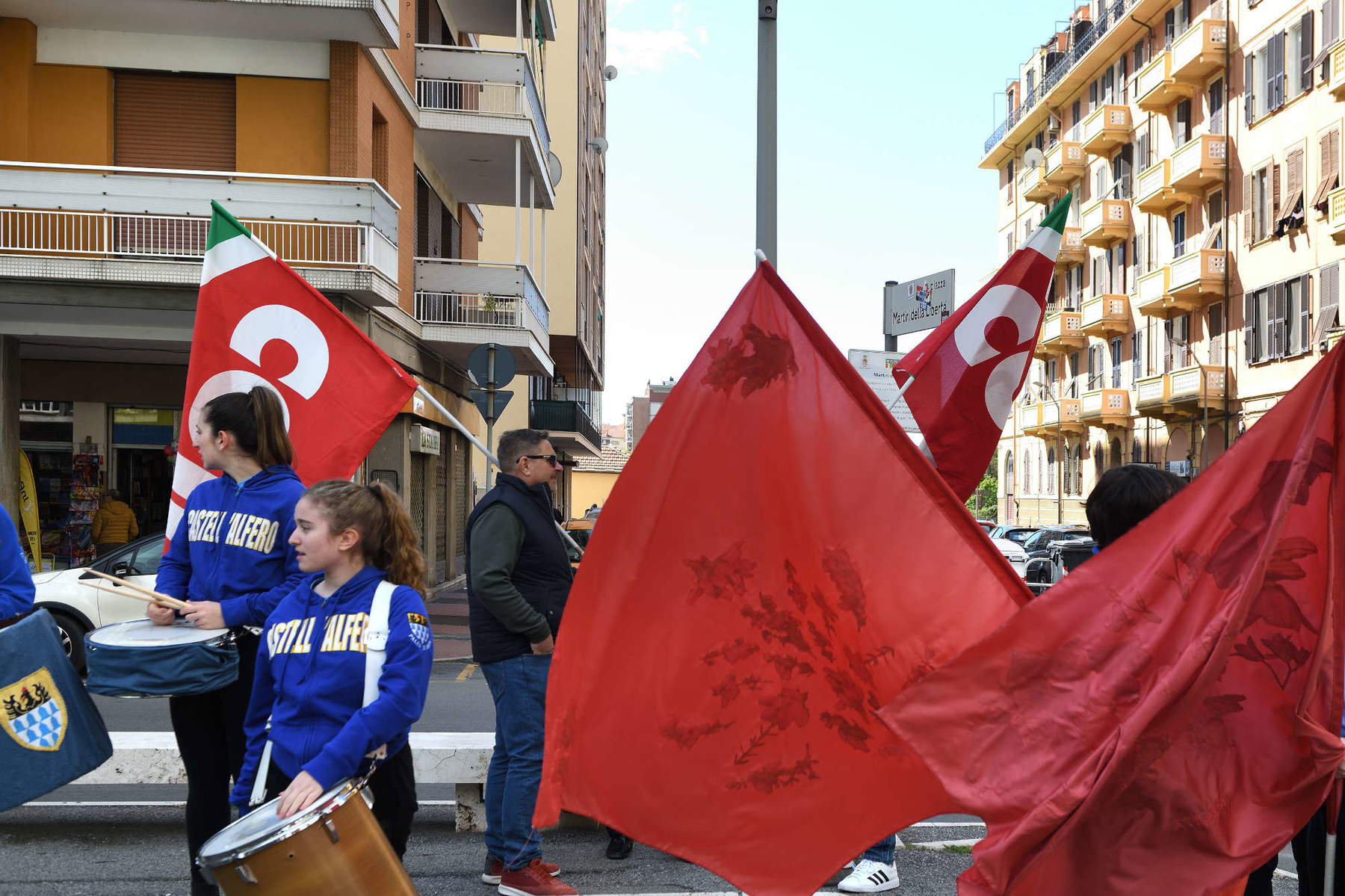
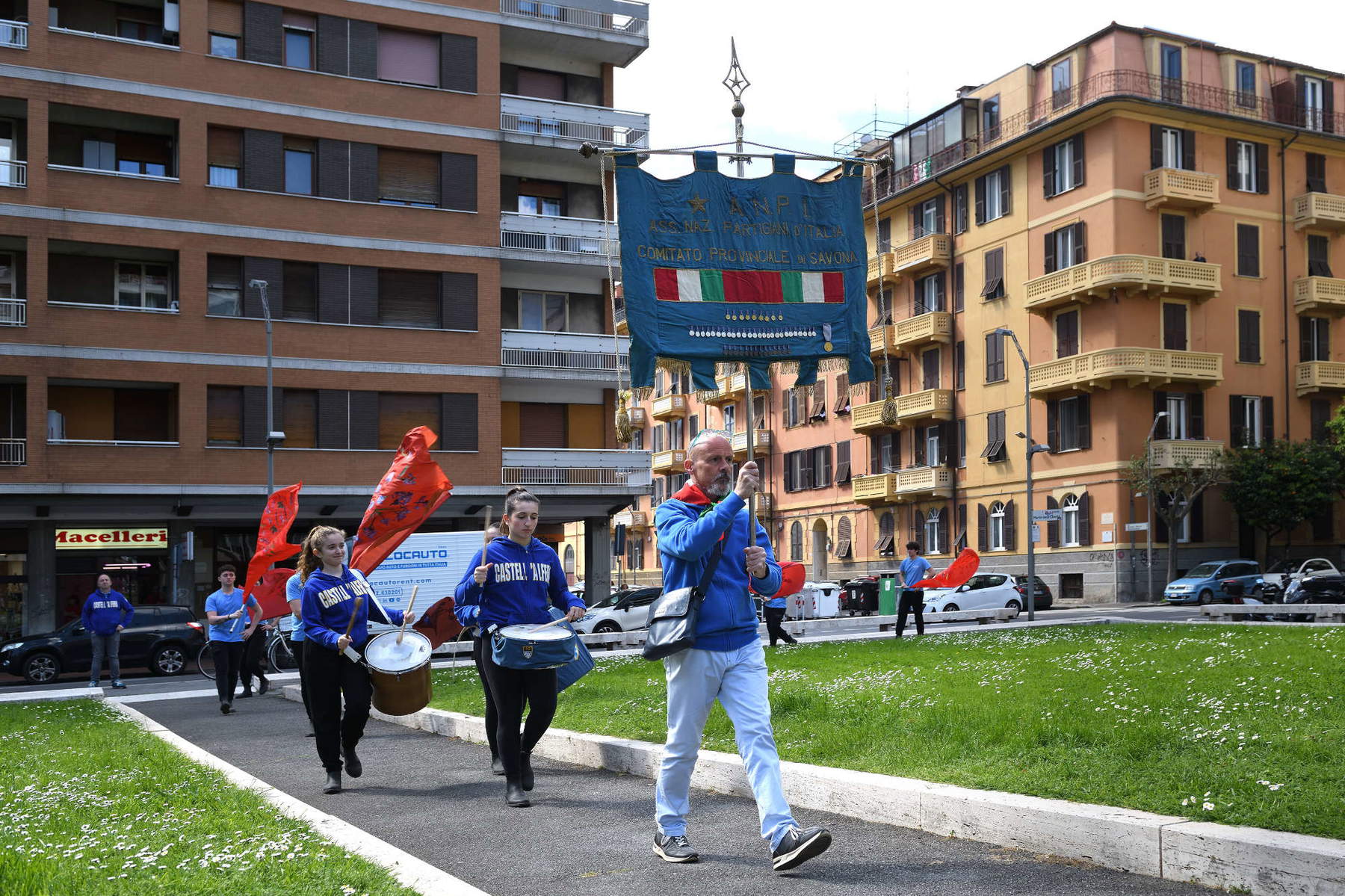
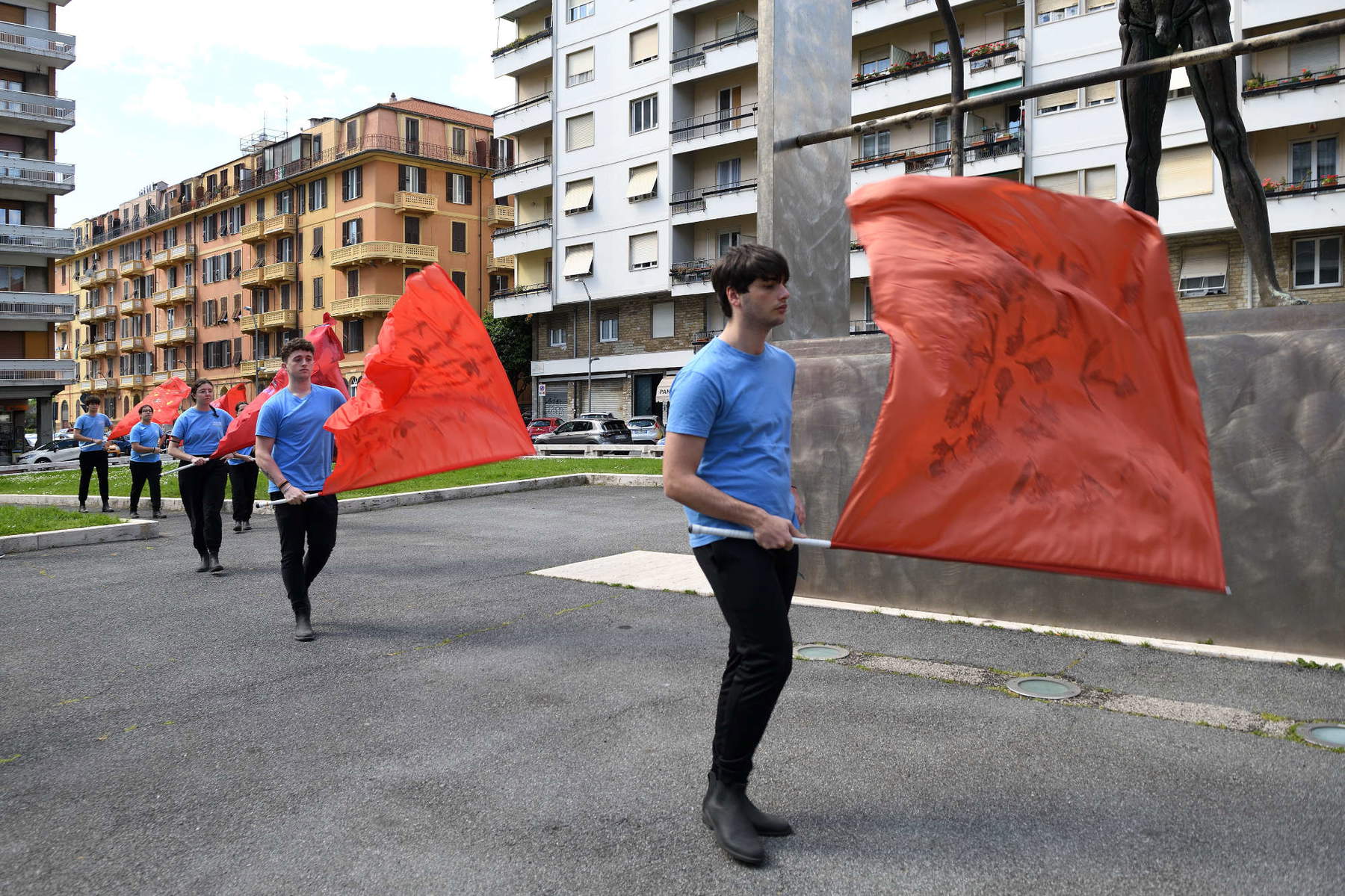
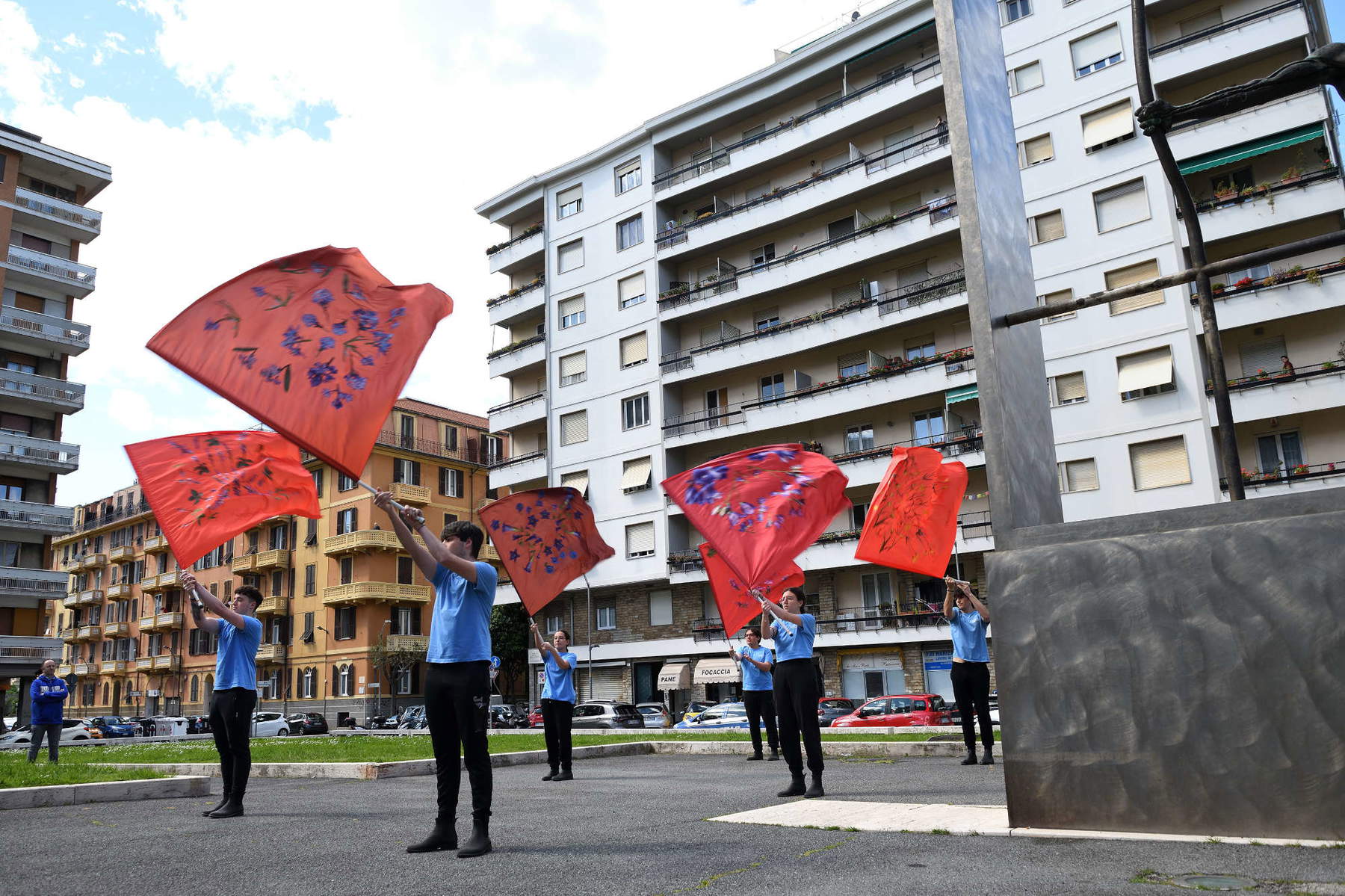
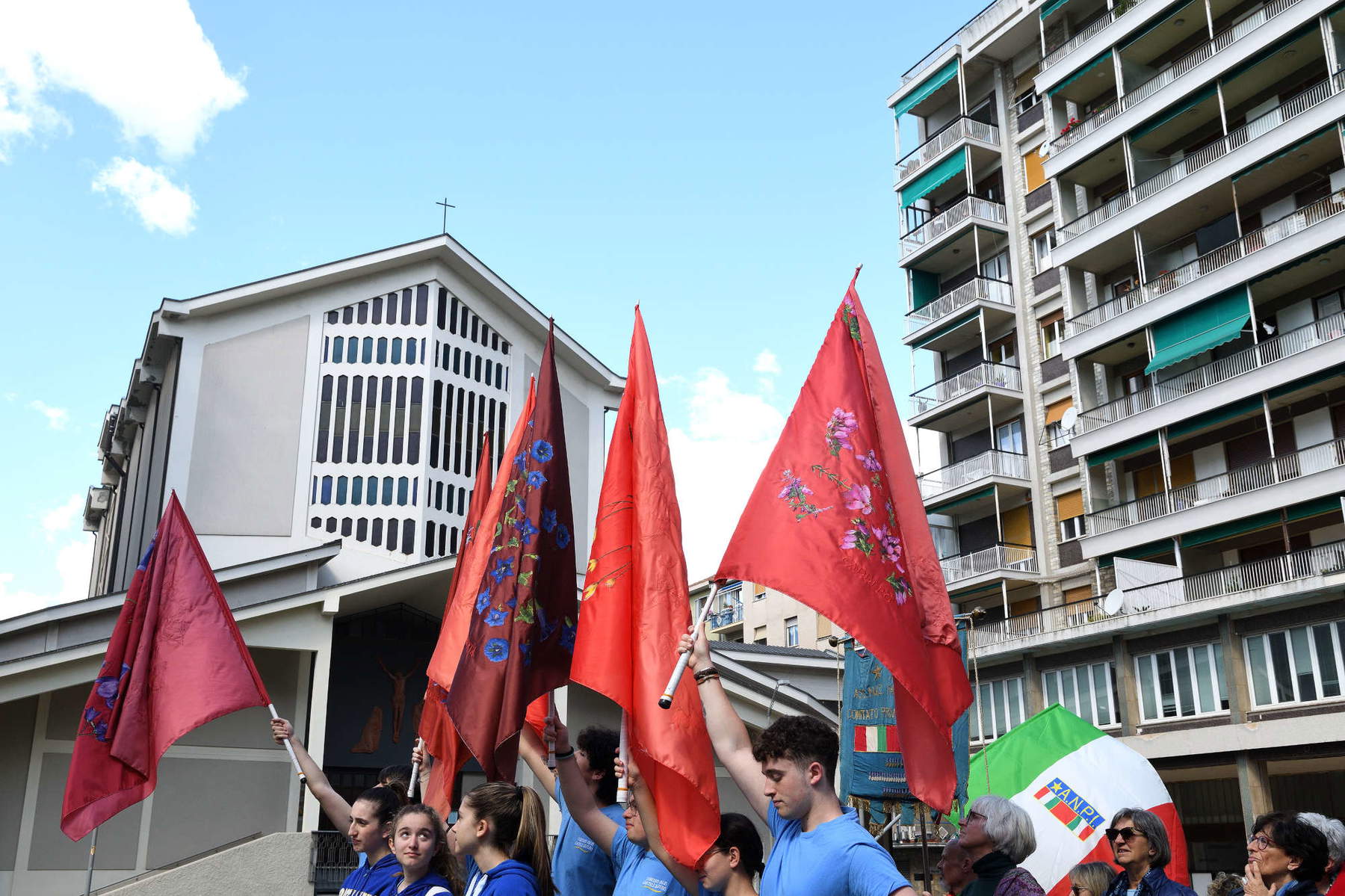
Continuing to reflect on places, Connexxion is credited with having reopened, limited to the duration of the exhibitions, theEx Carcere Sant’Agostino, which can occasionally be visited during events promoted by FAI. Here, inside the cells, site-specific projects by Alessio Barchitta, Rocco Dubbini, Armida Gandini, Federica Gonnelli, Lorenzo Gnata, Monica Gorini, Carla Iacono, Gianni Moretti, and Giulia Nelli have been set up around the themes of prisons, physical or mental imprisonment, of connection with known historical events or belonging to the artists’ individual biographies.
The Prison Chapel also hosted Selections, Filippo Riniolo’s touching action. The artist, mimicking the process of selection of prisoners at Auschwitz, reported by Primo Levi in the pages of If This is a Man, runs his finger over his smartphone and recites the names of more than a thousand Jews deported during the rounding up of the Rome Ghetto. Accompanied by a background of popular music that ill accords with the tragic nature of the action and is even more disturbing when one learns that the same tune was being broadcast in the concentration camps, the artist engages his audience in a real loop, in which the concept of time takes on a renewed value.
Riniolo’s reflection moves on several levels: the desire to restore an identity to individuals and a dignity to individual stories, leaving the numerical logic to which the mass media have accustomed us for every war, every attack, every calamity; the desire but also the duty to take time for the exercise of memory; the need, in every context, from the most dramatic to the most everyday, not to reduce human beings and relationships to mere selection.
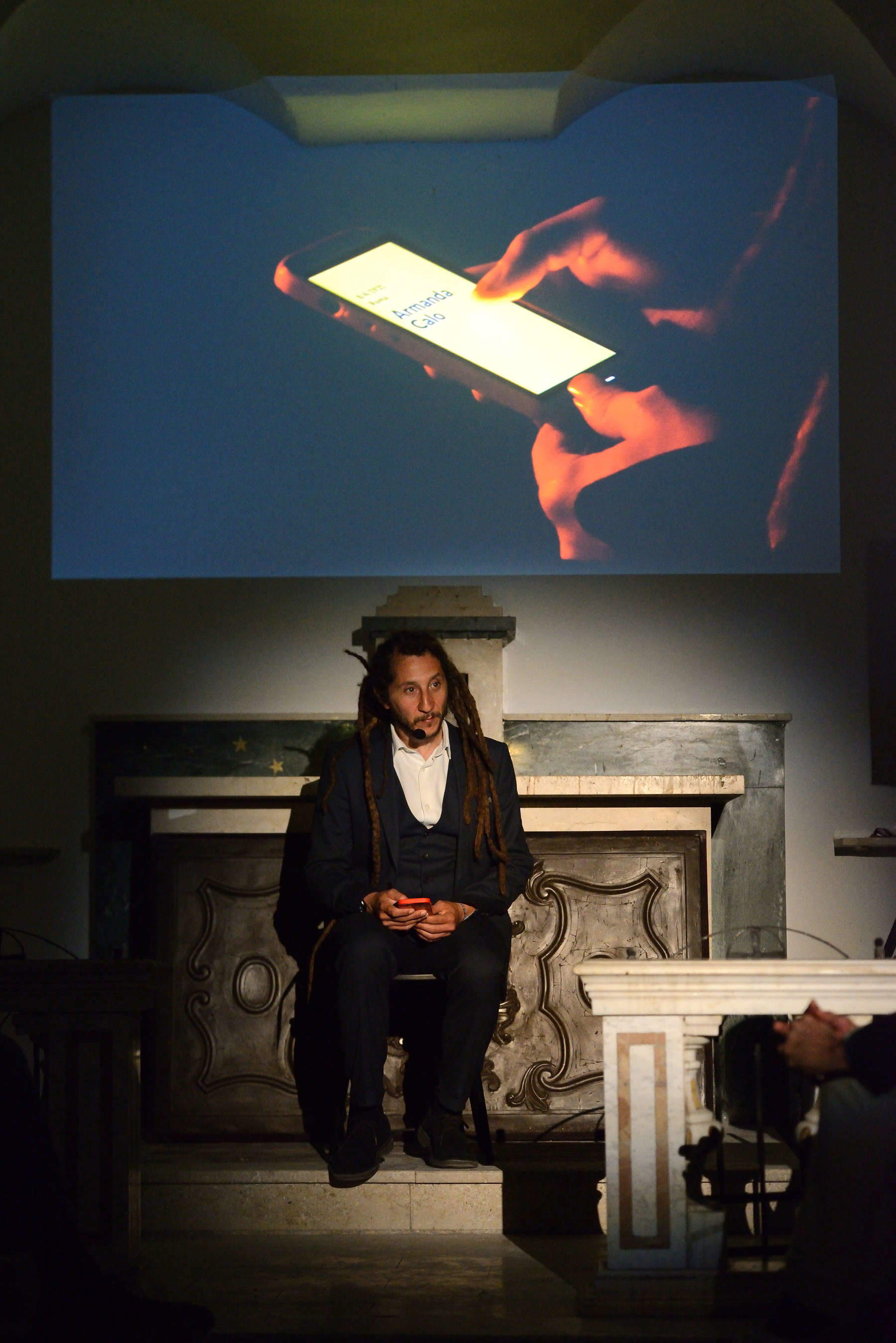
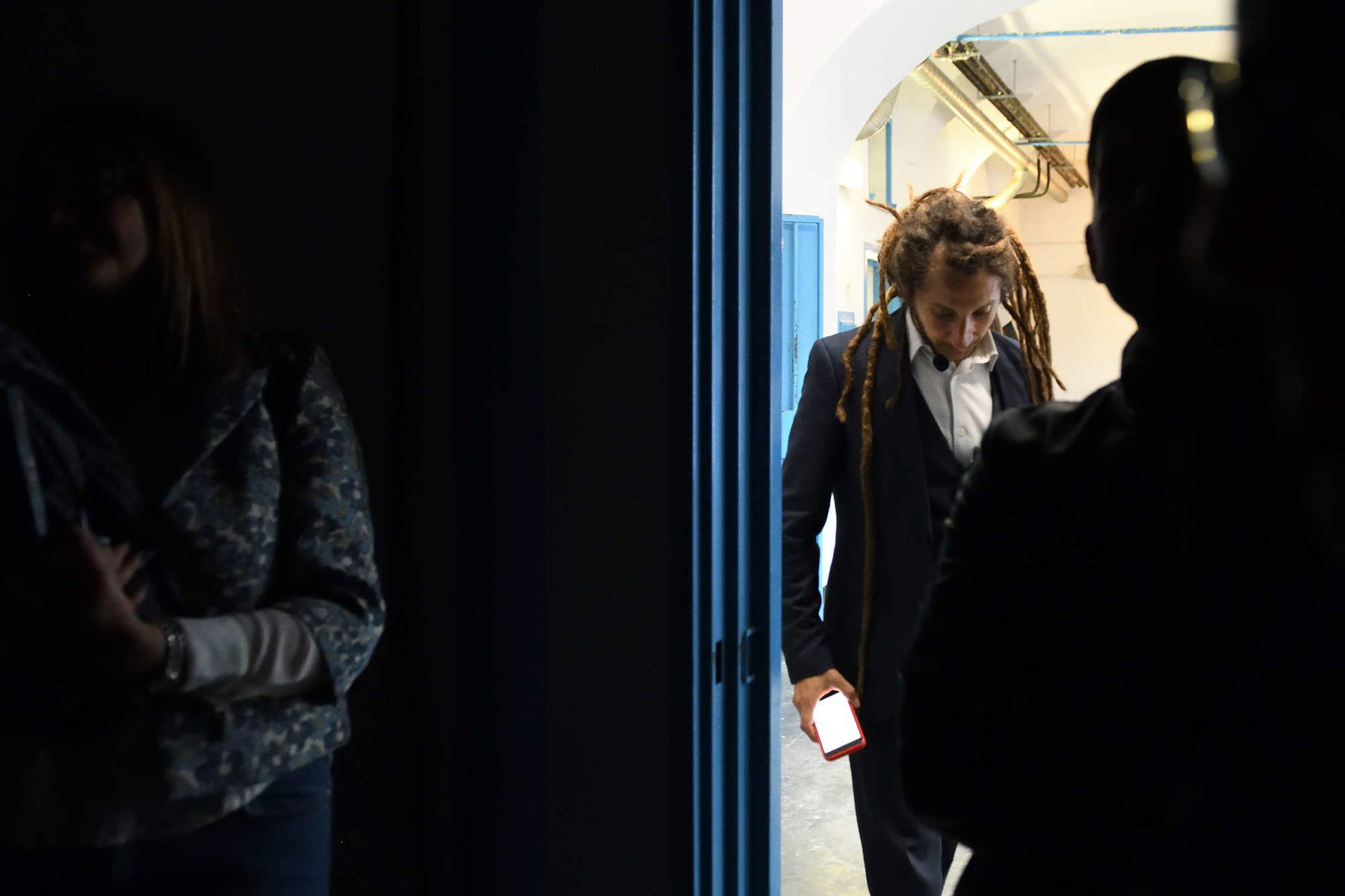
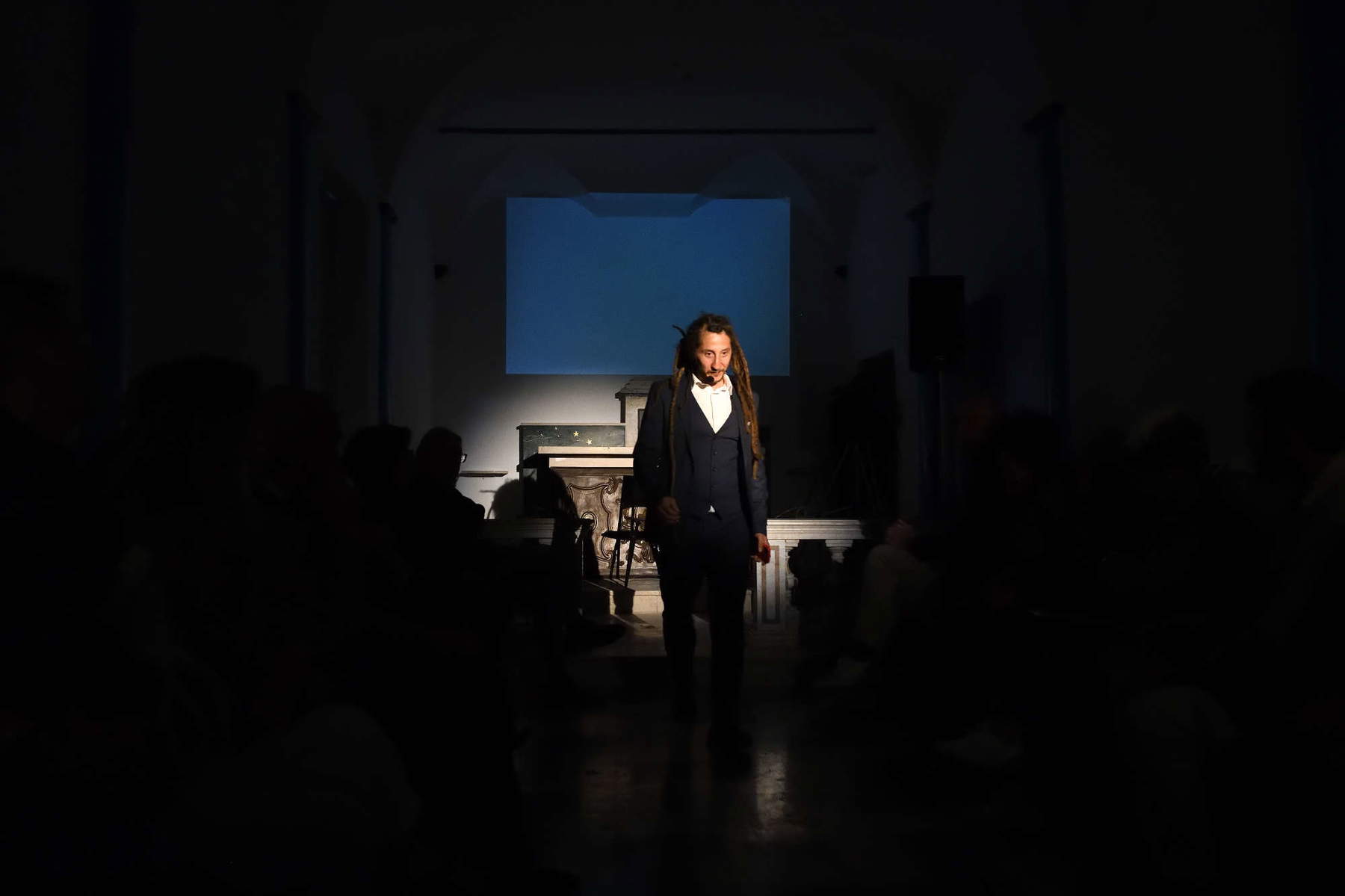
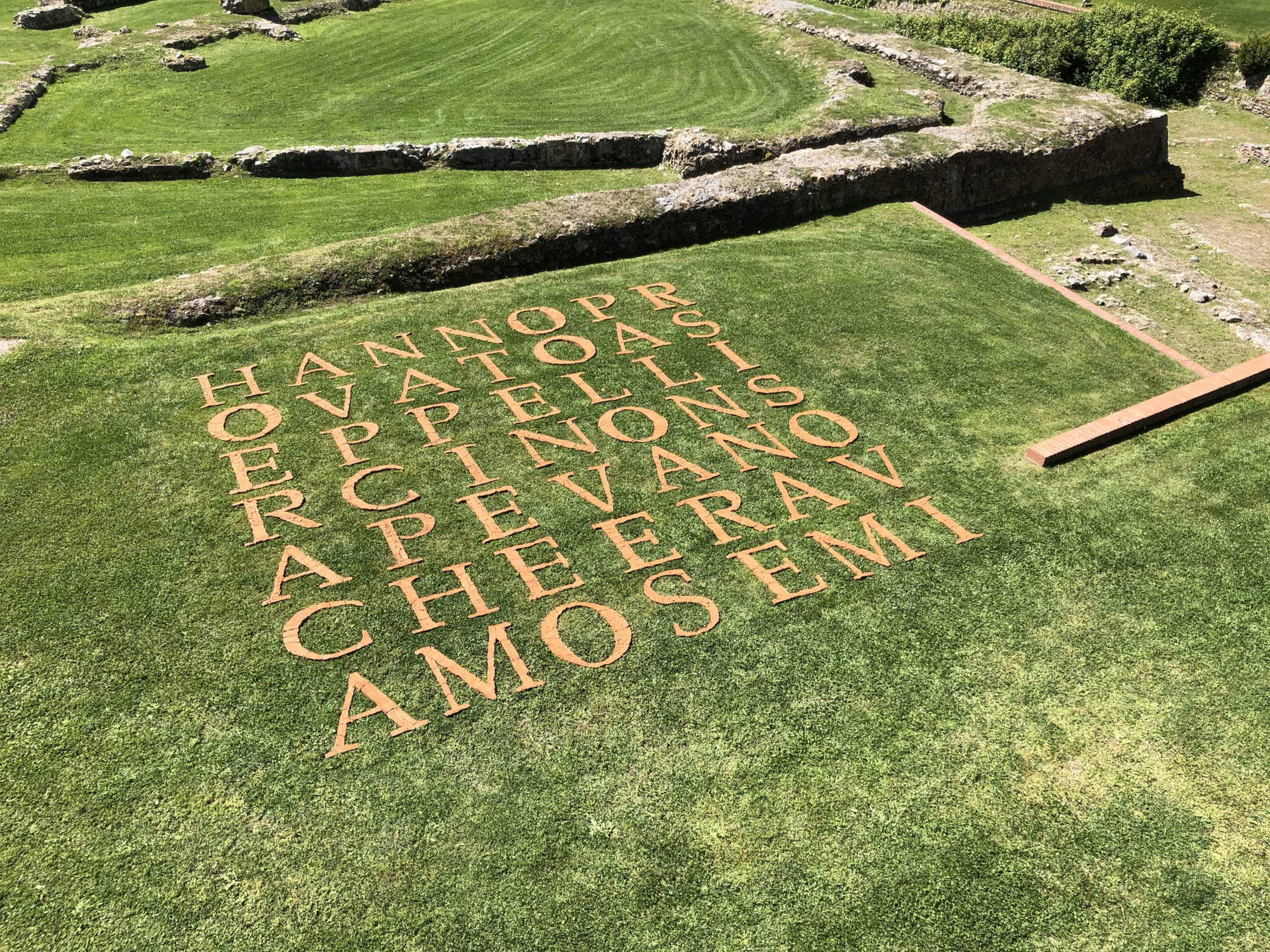
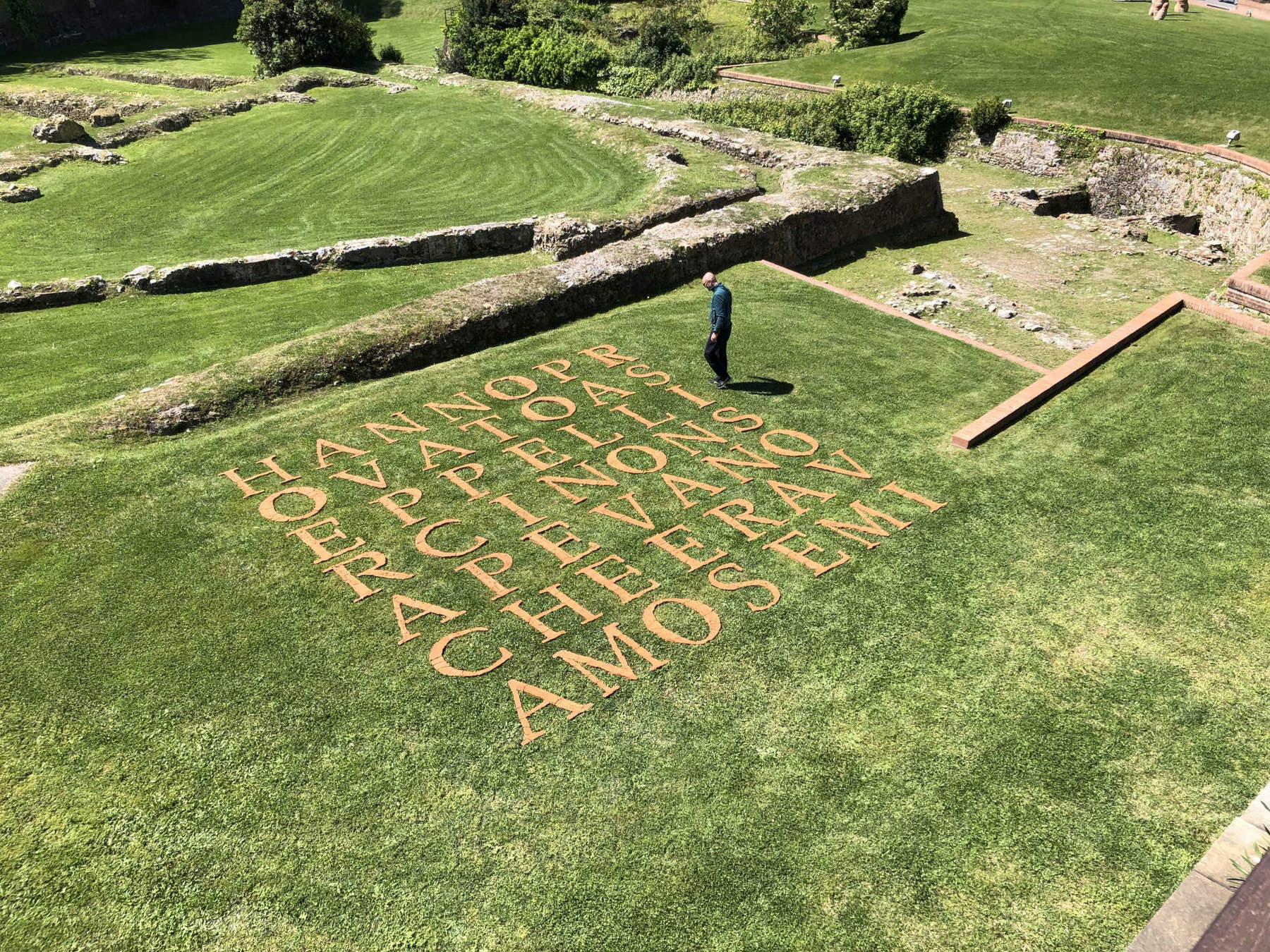
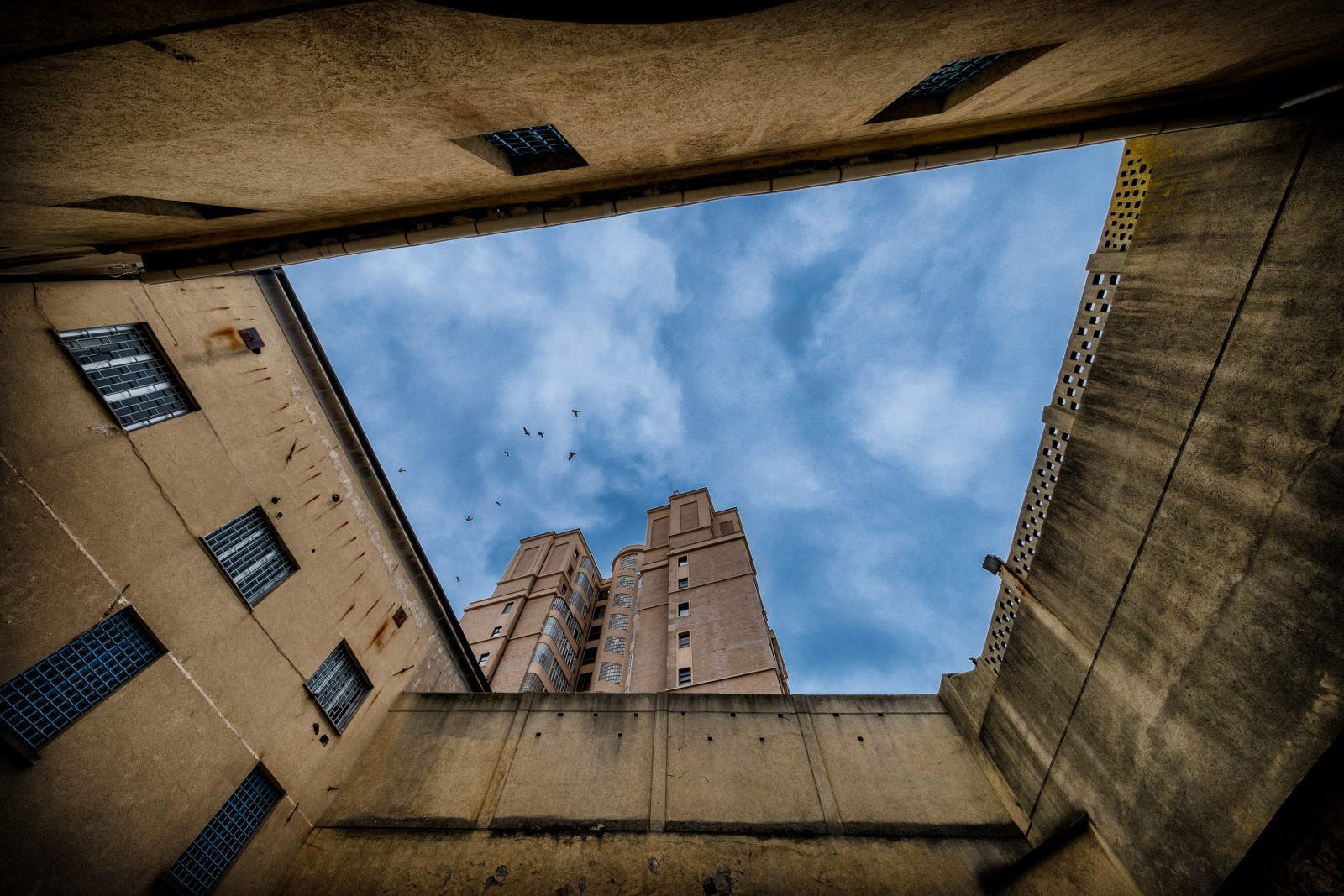
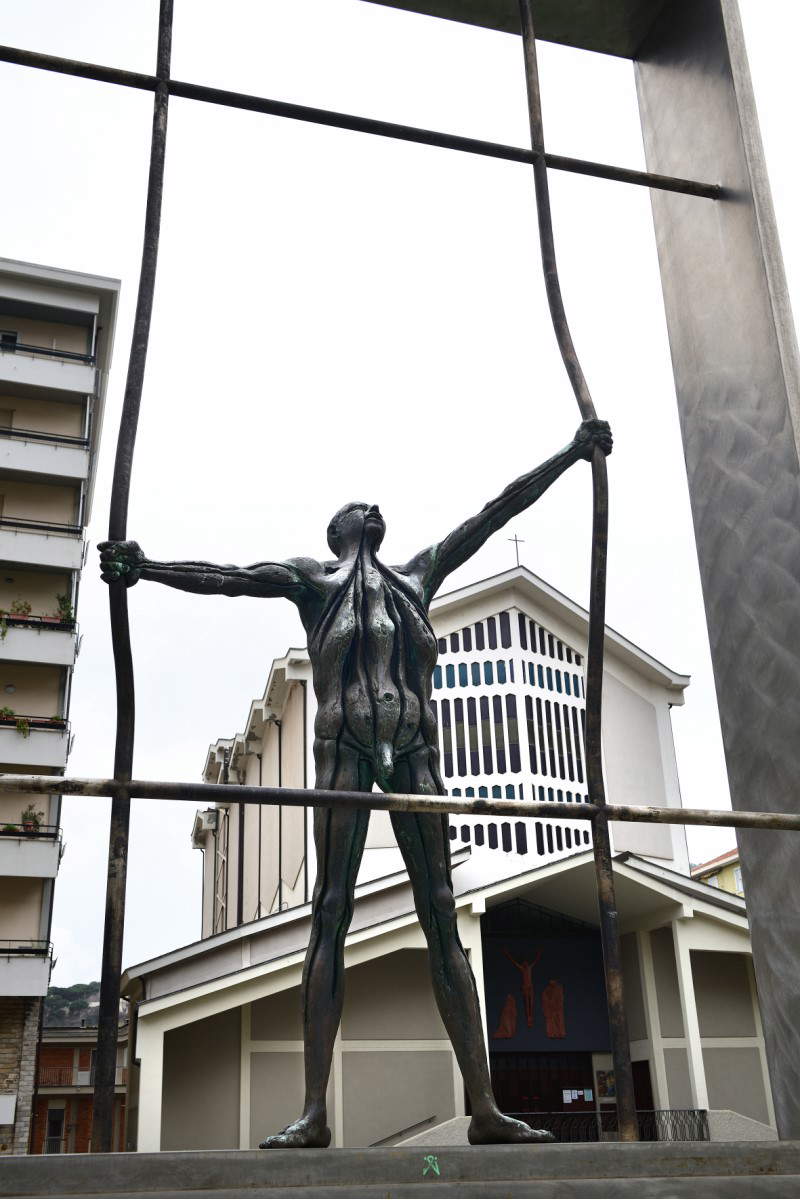
The third symbolic place of this edition, the Priamàr Fortress, saw the birth of Seeds, an installation at once monumental and perfectly integrated into the landscape that borrows the words of poet Dinos Christianopoulos, “they tried to bury us did not know we were seeds.” The statement, a tenacious hymn to resistance, lying on the lawn that frames the access ramp to the Priamàr, is Davide Dormino’s work, composed of forty-nine raw clay letters mixed with seeds and destined to be reabsorbed by the soil. This site-specific work, whose references are not solely to current events but look back to the history of the city of Savona and its conflicting relations with Genoa, is then linked to Per uno sguardo libero, a bronze sculpture of an index finger and thumb clutching a seed, facing Renata Cuneo’s Joan of Arc , a symbol of freedom and courage.
The work, also by Dormino, was exhibited at the Sandro Pertini and Renata Cuneo Museum, where the collections donated to the City of Savona by the Savona president and sculptor are gathered. Connexxion, in fact, also interacted with local museums and in particular with the Civic Archaeological and City Museum, where the exhibition Fragments. Acts of preservation for a future of freedom, curated by Savorelli and Matteo Galbiati with works by Roberto Ghezzi, Alberto Gianfreda, Laura Pugno, Attilio Tono and Ivano Troisi; with the Pertini Museum Cuneo, where Savorelli curated the exhibition Dialogues around freedom, including works by Elena Bellantoni, Davide Dormino, Rocco Dubbini, Armida Gandini and Gianni Moretti in dialogue with the permanent collections; and with the Museum of Ceramics, which hosted workshop activities led by a number of artists in collaboration with museum staff.
A rich, participatory and coherent second edition in its different sections that therefore confirms the success of the first festival and, above all, demonstrates how the languages of contemporary art can really belong to the community, fostering cooperation between different actors, allowing forgotten places to be returned to citizenship, albeit in limited moments, suggesting new possibilities and uses, and ultimately promoting renewed and plural looks at the city’s heritage. In Savona, which is preparing to submit a candidacy as Italian Capital of Culture 2027, this too represents, echoing the themes of Dormino’s work, a seed whose fruits will only be seen years down the road, with work that will necessarily have to be conducted in the manner adopted by Savorelli, in a widespread and choral manner.
Warning: the translation into English of the original Italian article was created using automatic tools. We undertake to review all articles, but we do not guarantee the total absence of inaccuracies in the translation due to the program. You can find the original by clicking on the ITA button. If you find any mistake,please contact us.



























